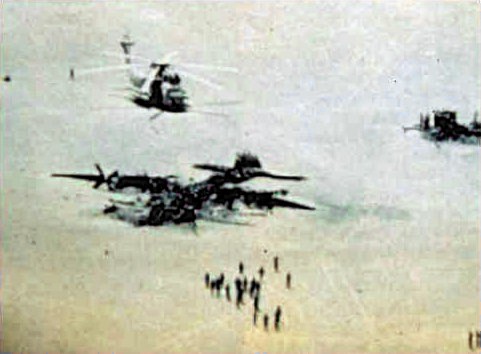By Robbin Laird
As the United States faces a global overload of strategic challenges and the concomitant challenge of shaping an effective and capable force to deal with these challenges but having serious budget stringencies, leveraging the unique capabilities which the United States already possesses is crucial.
It is nice to think of 6th generation aircraft, new AI autonomous systems, new weapons, and the like, but adapting what you have and leveraging unique capabilities which you possess is a key part of the way forward.
Whether it be the Aegis global enterprise, or the F-35 global enterprise or the tiltrotor enterprise, the United States has shaped unique warfighting capabilities which it can leverage as it shapes effective forces moving forward for today’s and tomorrow’s challenges.
I have written extensively about the Aegis global enterprise and the F-35 global enterprise, but we should also focus on a core capability which the United States has crafted and evolved since its introduction into Iraq in 2007, namely the tiltrotor enterprise.
If the Chinese had developed this capability and had built on its use since 2007 and its proliferation in the joint force, I guarantee there would be a robust literature on this threat and how do deal with it.
But since we have done it, we spend as much time criticizing it as understanding how the tiltrotor enterprise has transformed the capabilities of the USMC, the USAF and now the U.S. Navy with the U.S. Army next up.
This is a story of a unique capability which has reshaped the USMC in ways that are unimaginable without it. It has given the USAF special operational capabilities and now the U.S. Navy will experience a very different capability and approach to sustaining its distributed fleet.
And as the U.S. Army focuses on how to distribute its force, the new tiltrotor capability will become a backbone for an effort to leverage speed and range which no rotorcraft possesses.
When I worked for SECAF, he decided to implement a day without space for the USAF. It was not a pleasant experience. And we have now experienced what it is like to operate without an Osprey across the services. This has simply meant that core missions have not been met. Full stop.
When I went to visit MAWTS-1 earlier this month, I talked with the outgoing commander of this key training command, and discussed the recent WTI course. Unfortunately, the Osprey was not available due to the grounding of the aircraft by the three services.
This is what I learned from that discussion:
Col Purcell started by underscoring that the grounding of the Ospreys by the services after the accident last year with an Air Force Osprey, created a challenge for them. Not having Ospreys – which frankly are a bedrock platform in the transformation of their concept of operations – caused a problem in the WTI. There were some missions they simply could not do, and shifted assets around to do missions which was not their primary mission focus….
One mission which has been identified and which MAWTS-1 has been training for is the TRAP mission associated with a maritime strike mission. The need to recover rapidly any personnel downed in a maritime assault mission is something the Osprey is uniquely positioned to do. Only you can’t do it if it is not there. Fortunately, the ban on Osprey use was lifted in time for them to be able to use the Osprey in the maritime strike event within FINEX.
But it does not stop there.
If you want to deliver an engine to a large deck carrier for the F-35C and don’t have an Osprey, well you are out of Schlitz.
Or if the USAF is tasked with what President Carter asked the military to do in Iran in 1979, how would that work out? I remember specifically talking with my former professor Dr. Brzezinski about that mission failure and how the Osprey would have led to a different outcome, at least in his view.
You have heard of mission creep: but what missions missing in action?
That is what happens when you ground the tiltrotor enterprise.
Featured Image: Overview of the wreckage at the Desert One base in Iran. Credit: Wikipedia


